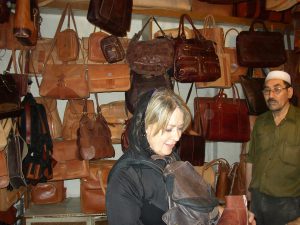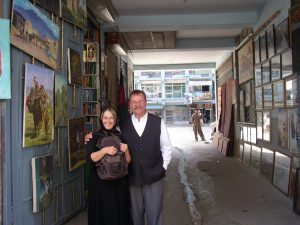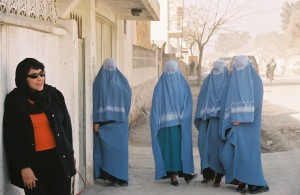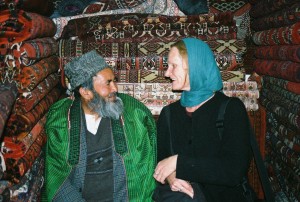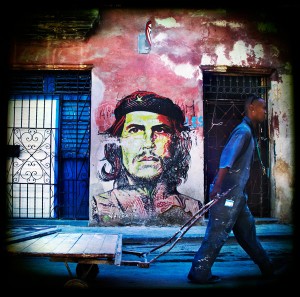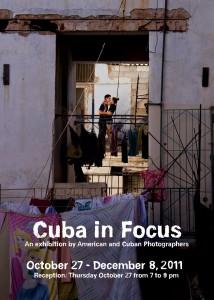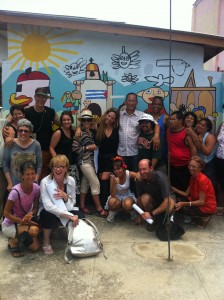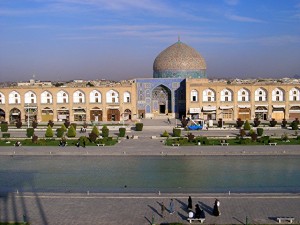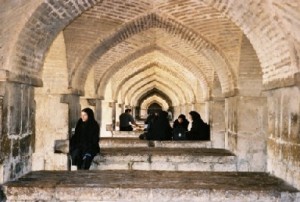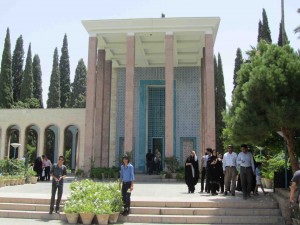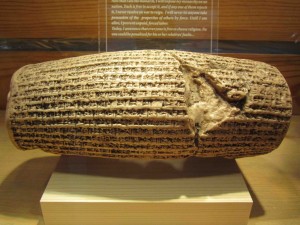As part of a series honoring 10 years of relationship building, friendship and learning in Afghanistan, today we share the story of Patricia J. Idler and Randy Idler who created a customized Reality Tour to Afghanistan in 2009.
I first spoke with Patty when she called Global Exchange to explore the possibility of a customized Reality Tour trip. She wanted to go to Afghanistan to learn, meet and engage with a special group of people, to build relationships and create a socially responsible business that would give back. We worked together to put her vision into words, then I introduced her to our in country program officer Najib to help make her dream become a reality (tour.) Here is Patty and Randy’s story.
—-
Guardian Angels and Afghan Cobblers: A Customized Tour Past Participant Shares Her Story by Patricia J. Idler and Randy Idler
Global Exchange you made our trip to Afghanistan amazing. Thank you for your friendship and global exchanges. When I wrote to your office in a panic before I went to Afghanistan, I needed to have real authentic help in Afghanistan. Fear and paranoia are detrimental to any situation, and I suddenly was full of anxiety. I am not dismissing that there are very dangerous situations in the world, but I am not normally in a state of real fear. I needed someone to reassure me that there were normal Afghan people that want the same things for their families in Afghanistan that I want for my family. I needed to know that there would be someone that was my friend and knew the lay of the land, like a guardian angel. I needed to know that I would not hurt the US soldiers by coming to help and getting in the way. Global Exchange you provided me with guardian angels.
 My hope was to find cobblers in Afghanistan that would want to sell their product to a nonprofit or for profit that would also give back a percentage to the little street children that do not deserve this awful situation. My hope was to help the economic situation in Afghanistan. We are not going to be getting our US service boys home, unless American citizens empower themselves and help out. The statement that there is nothing to fear but fear itself is a reality. American citizens have become so fearful of others.
My hope was to find cobblers in Afghanistan that would want to sell their product to a nonprofit or for profit that would also give back a percentage to the little street children that do not deserve this awful situation. My hope was to help the economic situation in Afghanistan. We are not going to be getting our US service boys home, unless American citizens empower themselves and help out. The statement that there is nothing to fear but fear itself is a reality. American citizens have become so fearful of others.
Global Exchange your love of people and the world made the difference. You brought me back to reality. You emailed me and said; we can design your trip; we can help you even if you have your trip planned. We have wonderful guides and drivers. Here are their emails. We have been very successful with our exchanges all over the world to every country. Would you like to contact people? Would you like to come see us in San Francisco? This simple reassurance allowed me to get back to work on my project.
I would recommend you to the world traveler that hopefully wants to help the world. I wish I could express how grateful I am to organizations such as Global Exchange that want to replace fear with peace, prosperity and hope for mankind.
The driver and guide you sent asked if they minded if they brought their kids. It was wonderful. We saw more of Afghanistan than we saw with other guides or on our own. We met our cobblers. We met Afghans everywhere.
We were not targets, but we did dress with respect for the Afghan culture. We dressed like the Afghans, because we respect them and did not stand out. We met Babur and we walked back in time. We went to the Afghan markets and bought kites in the old city to fly on the hill on Fridays.
We began to understand that you do not need to take items from America for the children, like harmonicas. One must buy from the Afghans for the Afghans. Items like bottles of water and simple things like food are wonderful items readily accepted. We began to see the little children and feel their hunger and realize that child labor laws here are even ridiculous. When your tummy is empty, is it better to starve? They would love to be able to work for food. Their begging is the sole supply of revenue for their families. Schools like Aschiana school try to educate the street children and help the families with small micro loans for business. Our countries are planets a part.
My husband was so fearful before we went with the help of our guardian angels relaxed. He began to give to the children, “but you must give to all not just to some”. We began to learn and listen to the store keepers on the empty streets. We began to understand the pride that has been taken from people that just want fair trade prices and to be treated like respectful business people. We began to make friends. Thank you for your help Global Exchange.
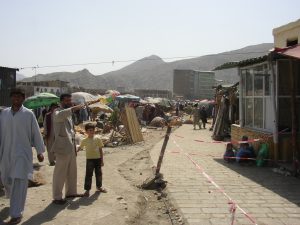 The US soldiers want the situation to get better and return to their own families. Every American needs to pitch in and help the situation or we need to go home and help rebuild another way through groups such as Global Exchange.
The US soldiers want the situation to get better and return to their own families. Every American needs to pitch in and help the situation or we need to go home and help rebuild another way through groups such as Global Exchange.
—
Thanks to the Idlers for taking the leap of faith to call Global Exchange and customize their first visit with us to Afghanistan. You can too. Visit our customized tour page for more information.

